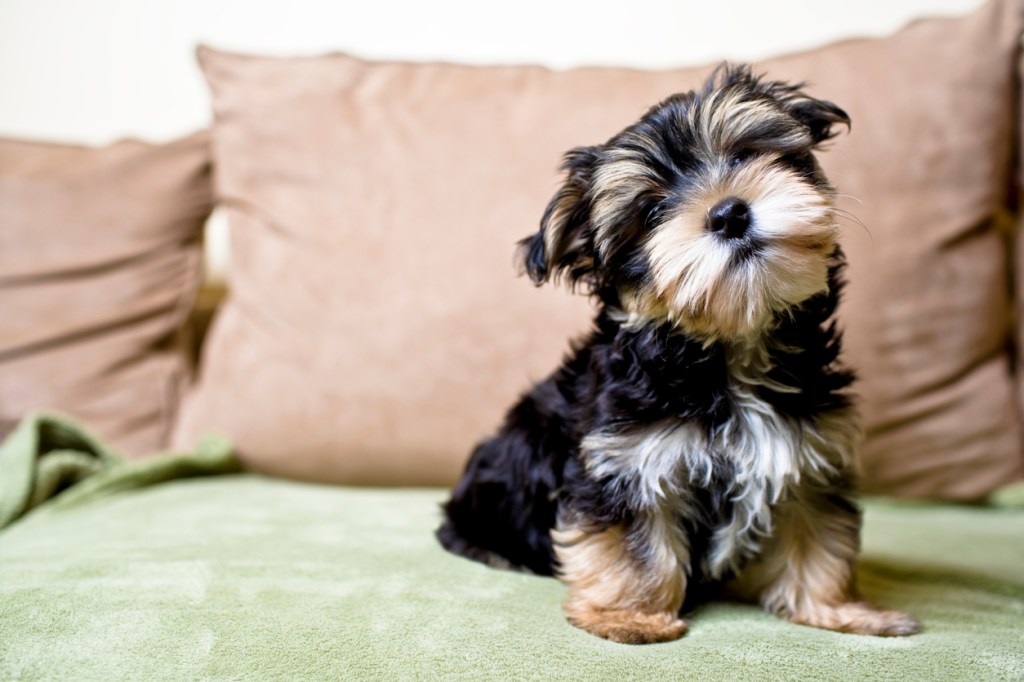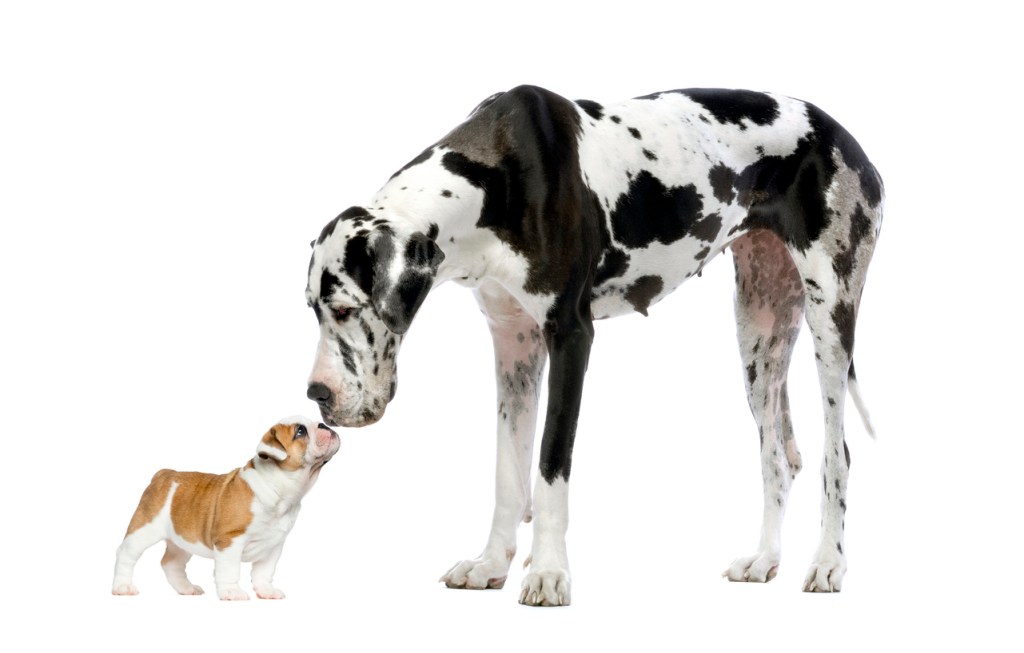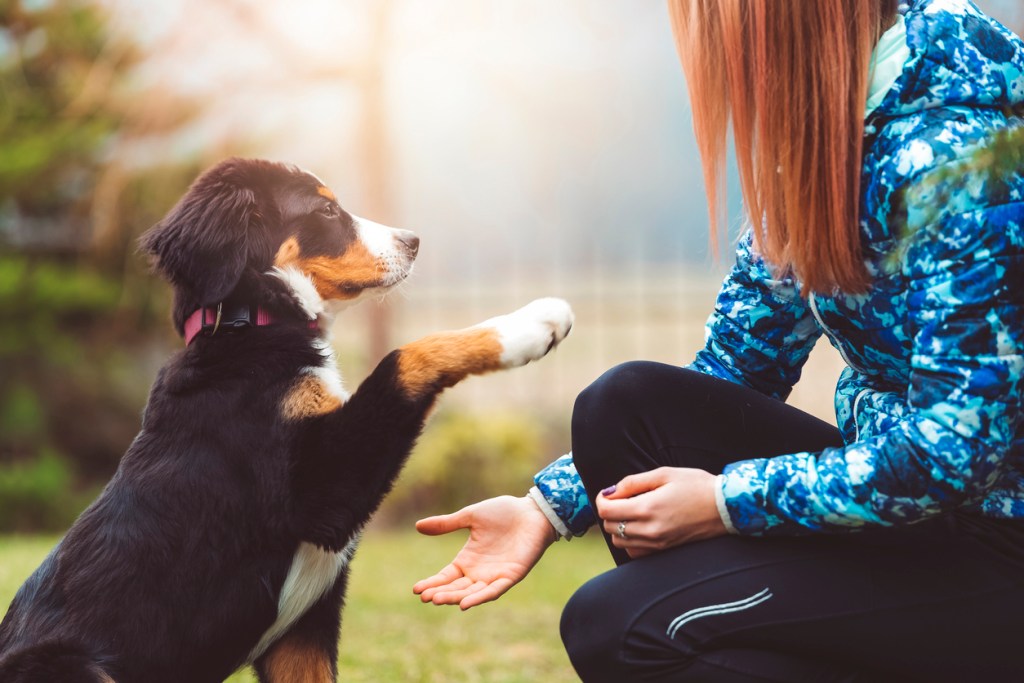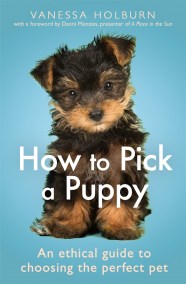How to Pick the Perfect Puppy

Humans have selectively bred domestic dogs for thousands of years and although it’s hard to estimate how many different breeds exist in the world today, the UK Kennel Club currently registers puppies across 221 recognised breeds. This has resulted in a multitude of dog sizes, appearances and personalities ranging from hairy to smooth or curlycoated and even hairless, from miniature to outsized, quiet and calm to energetic and vocal. Dogs have been bred to serve as a loyal companion, to work around livestock and hunt, to cope with extremes of temperature, to provide security and even to provide transport, rescue, bomb disposal and disability aid services.
Accordingly, these diverse types of dogs vary tremendously in the care and stimulation they need, and in the characteristics and personality they are likely to develop. The upside of this means that there is a dog type or breed (or mix of breeds) ideally suited to you, your home and your lifestyle. The trick is to find which one it is. This article will guide you through some of the key features you should consider when picking a puppy.
Big or small?
Dogs come in all shapes and sizes. On the larger end of the scale you have the Great Dane, Deerhounds and Wolfhounds, all of which have a Kennel Club Standard minimum height of 28in (71cm) for the bitches of the breed. There are also ‘giant’ and heavy dog breeds such as the Old English Mastiff, Leonberger, Newfoundland and St Bernard, which can weigh 220lb (100kg), 165lb (75kg), 154lb (70kg) and 264lb (120kg) respectively. Clearly, you need a house of a certain size and a large vehicle to accommodate dogs such as these, plus the physical strength to walk and control them in public.
At the other end of the scale, small dog types include Pomeranians, Yorkshire Terriers, Maltese Terriers, Miniature Pinschers (Min Pins), Dachshunds and, of course, the Chihuahua. Some dog breeds are also incredibly light; these include Russian Toy Terriers, Italian Greyhounds, Affenpinscher, Toy Fox Terrier, Toy Poodle and Papillons. You’ll need to be gentle around these dogs to avoid injury. Smaller dogs are incredibly portable, of course, making them ideal if you need to take your dog to work via public transport, but bear in mind they also have small bladders so will need lots of loo breaks and can be vulnerable to wild animals if left alone outside.

Stimulation
Alongside the physical size and weight of a potential dog, you must also consider what your favoured breed has been developed to do, because this will determine the type of mental stimulation it will need on a daily basis. Dogs that have typically been assigned a working role will have developed to be highly intelligent. This can be both a blessing and a curse! An intelligent dog will likely be highly responsive during training but can quickly become bored if not kept occupied. And a bored dog can become destructive, vocal and/or anxious about being left alone.
Popular breeds such as Border Collies, Poodles, German Shepherds and Golden Retrievers all came out top in a recent intelligence study, having been bred to complete complex and careful tasks for their masters for many years. This means that although they make great pets, they also need an outlet for their brainiac disposition. These are not breeds that will cope well with minimal training and stimulation.
Personality
Just like humans, dogs differ widely in typical personality traits and some of these can be attributed to distinct breeds. Typically, you might hear a dog’s nature described as being playful, curious, social, responsive, independent, shy, reactive, confident, laid back or adaptable. This is again a result of the selective breeding of dogs to perform certain tasks. For example, a dog expected to work as part of a team, such as a Hungarian Vizsla, that is expected to hunt, point and retrieve game on command, needs to be both intelligent and responsive.
When you consider a certain breed or type of dog, think about the role that this dog’s ancestors were expected to carry out and how that will have affected personality traits. Would this type of dog fit with you and the lifestyle you choose to live? Lapdogs like the King Charles Spaniels, Chihuahuas and Bichon Frises were bred as companions and therefore love attention and being with their owner. That means that they could cope less well than other more independent breeds if left alone.
If you’re looking for a family dog, you’ll need to consider a loyal pooch that enjoys attention and playtime. Smooth Collies fall under the ‘pastoral’ category, and have developed into both faithful and versatile dogs because of this. Beagles are another breed popular with families as they developed from a small scenthound running alongside hunters, enjoying thinking and ‘doing’. This means that they love having fun with their family and have the energy for endless play.
Conversely, many dogs bred to act as guard dogs, such as an Alaskan Malamute, can be extremely wary of strangers, and may not be the best choice for a busy family home with lots of visitors. The Shiba Inu is also known to be aloof, and is often referred to as being ‘cat like’. The Basenji was developed to hunt at a great distance from its owner and therefore is also independent in nature.
Training
Don’t think for one minute that training a dog is easy. Dogs don’t pick up commands immediately after hearing them and training isn’t something that fits neatly into a few weeks. Training your dog is an ongoing commitment that requires patience and consistency. However, it can also be tremendous fun and incredibly rewarding and helps build a bond between you and your pet.
Some breeds are easier to train than others, and if this is your first dog and your first experience training one, it makes sense to look for a dog that is likely to be responsive. Typically, a dog that is easy to train will be so because it is intelligent and eager to please, although some types of dog are very motivated by food, toys and praise, which makes training easier, too.

Dogs are capable of understanding up to 250 words and gestures, can count up to five and can perform simple mathematical calculations. Dogs in the top 20 per cent of doggy intelligence are able to understand as many as 250 words and signals, which puts them on a par with a two-and-a-half-year-old child. Working and gundog breeds and those used as police or service dogs are typically considered more responsive to training. These breeds include Border Collies, Labrador Retrievers, Golden Retrievers, German and Australian Shepherds, with Poodles and Shetland Sheepdogs also considered smart.
Intelligence can be a double-edged sword, however, as clever dogs may also work out that it is more fun or rewarding (for them at least) to do their own thing, such as run off to play with other dogs rather than come back when you call, or run away with a toy to get a game of chase started rather than play fetch on your terms. Dogs that were typically expected to work independently or at a distance from their owners – often terrier and hound breeds – tend towards this type of intelligence. Therefore Afghan Hounds, Basenjis, Basset Hounds and Pekingese might present more of a challenge in training. Do you like a challenge? How about one that could go on for ten to fifteen years?!
From animal welfare campaigner Vanessa Holburn and with a foreword by dog lover and presenter of 'A Place in the Sun' Danni Menzies, this book has everything you need to know to help you pick the perfect pooch for your home and lifestyle.
How To Pick a Puppy is the essential handbook to finding a 'furever' dog and ensuring that you have many happy and healthy years together. It contains practical advice on how to research the types and breeds of dog available. It considers the pros and cons of puppies, senior, pedigree and rescue dogs, and explains why one might suit an individual more than another.
The book equips the reader with all the right questions they need to ask before they choose a dog and shows them how to find a responsible breeder or rescue centre. It teaches how to avoid the pitfalls of getting the wrong dog from the wrong place, and shows you how to spot and avoid a puppy farmer. It also explains the legal responsibilities of dog ownership and covers the range of hobbies and activities owners and dogs can enjoy together.
At each stage of the book, Vanessa's advice is complemented by comment from canine experts such as trainers, behaviourists, breeders and those involved in rescue. Happy dog owners and foster carers also add their experience.
In the final section the book guides you through the settling in period, discussing early training, socialisation and vet care, so your first month together can be as smooth as possible.



